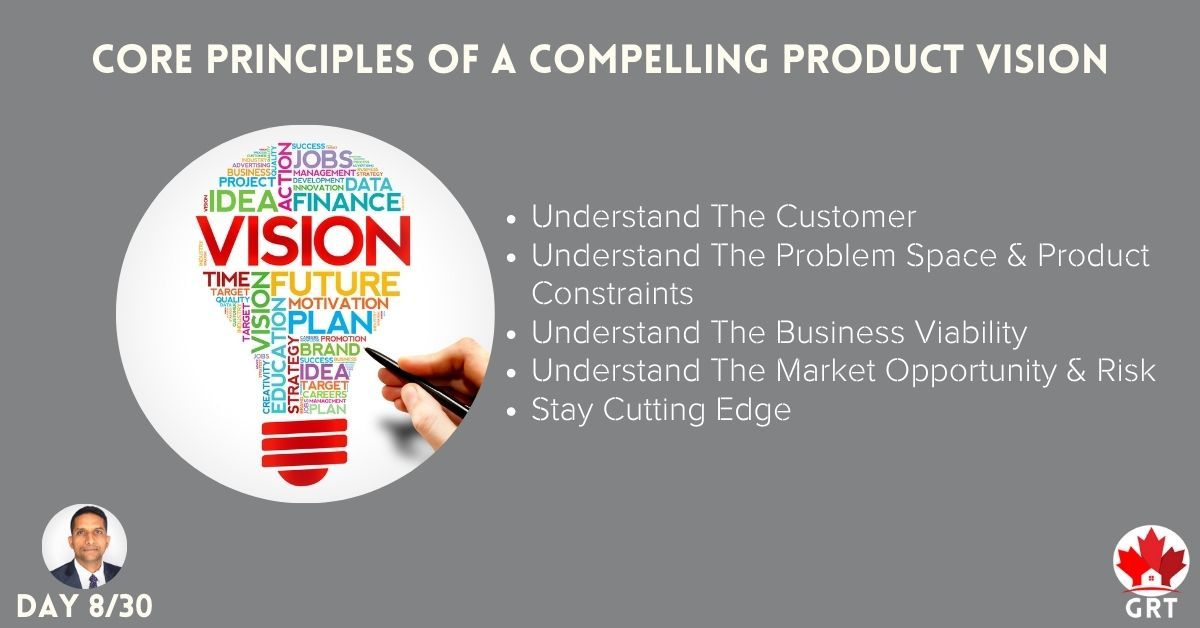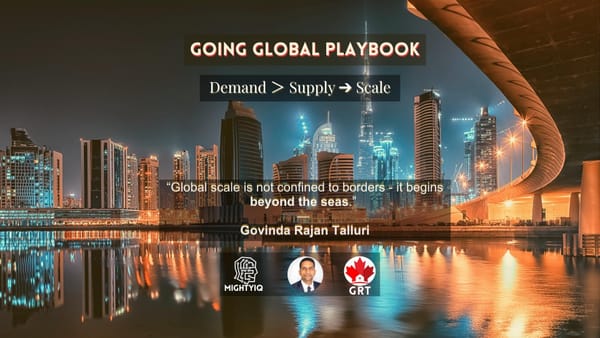Core Principles of a Compelling Product Vision

“If I only had 6 hours to chop down a tree, I would spend the first 4 hours sharpening my axe.” – Abraham Lincoln.
Before we actually go and build successful products - we need to be sure that our product vision is successful in capturing the end goal. Generally, when we are in the product development journey - we focus majorly on metrics, execution and agile methodologies, and so on. What we want to achieve is the end goal and our vision statement should capture that goal clearly.
Before we actually go about creating the product vision, it is important that we step back to understand the actual need of the customers - who are in need of our product or solution. The product vision should be long-term and is focused on the customer - for whom we are building it.
While we won’t be changing the product vision every single year - we need to ensure that the vision remains valid for 3 -5 years at the very least by bringing all the key stakeholders together and working towards defining the vision. We need to craft a really compelling vision for the long term by actually taking the time needed to draft one. (Very important)
Based on my past experiences, I believe the following are some core principles - which we need to consider in order to craft a compelling product vision:
Understand the Customer: Before we go and build the actual product, we need to make sure that we are keeping the customer’s needs and wants - at the heart of our overall product vision. We should be able to gauge the acceptance level for our product. We need to know whether the customers are willing to pay for the solution.
Understand the Problem Space & Product Constraints: While we are excited about this product idea, it is very important to have clarity on the problem space. Most importantly - we need to understand what are the possible constraints that we may foresee in our product-building process.
Understand the Business Viability: Before we decide to actually build the product, we need to evaluate the viability of the product in our business. What I mean by that is - we need to invest our time and efforts into something that is actually viable and makes overall business sense for the organization.
Understand the Market Opportunity & Risk: We need to understand - whether there is an existing product - if yes, then how our solution is going to be different. If not, why is not pursued earlier? Having clarity about the market opportunity will eventually help us take the right step forward - to tap into future opportunities.
Stay Cutting Edge: The pursuit of creating something very new or achieving a monopoly in a specific business requires businesses to build products that are innovative and have got a technological advantage over competitors. For this, it is important that we stay attuned to the latest industry findings, and emerging technologies and continuously find ways to adapt to emerging trends.
The approach or framework we follow is different and will depend on our business use case. I am a fan of the framework popularized by Amazon which is to work backward with their approach of starting with the press release.
On the same note, I am a great fan of Geoffrey Moore’s book - Crossing The Chasm - which talks about making and selling disruptive products to the mainstream market. Moore has outlined a template for defining the product vision. Please click on the following link to get access to it: Click Here.
I am a product management professional based in Halifax, Canada and I write about technology, innovation, entrepreneurship, and business strategy. You can learn more about me at the following link: https://medium.com/@talluri
Sources:
- Book: Crossing The Chasm by Geoffrey Moore
- Product Mission Vs Vision by Marty Cagan



